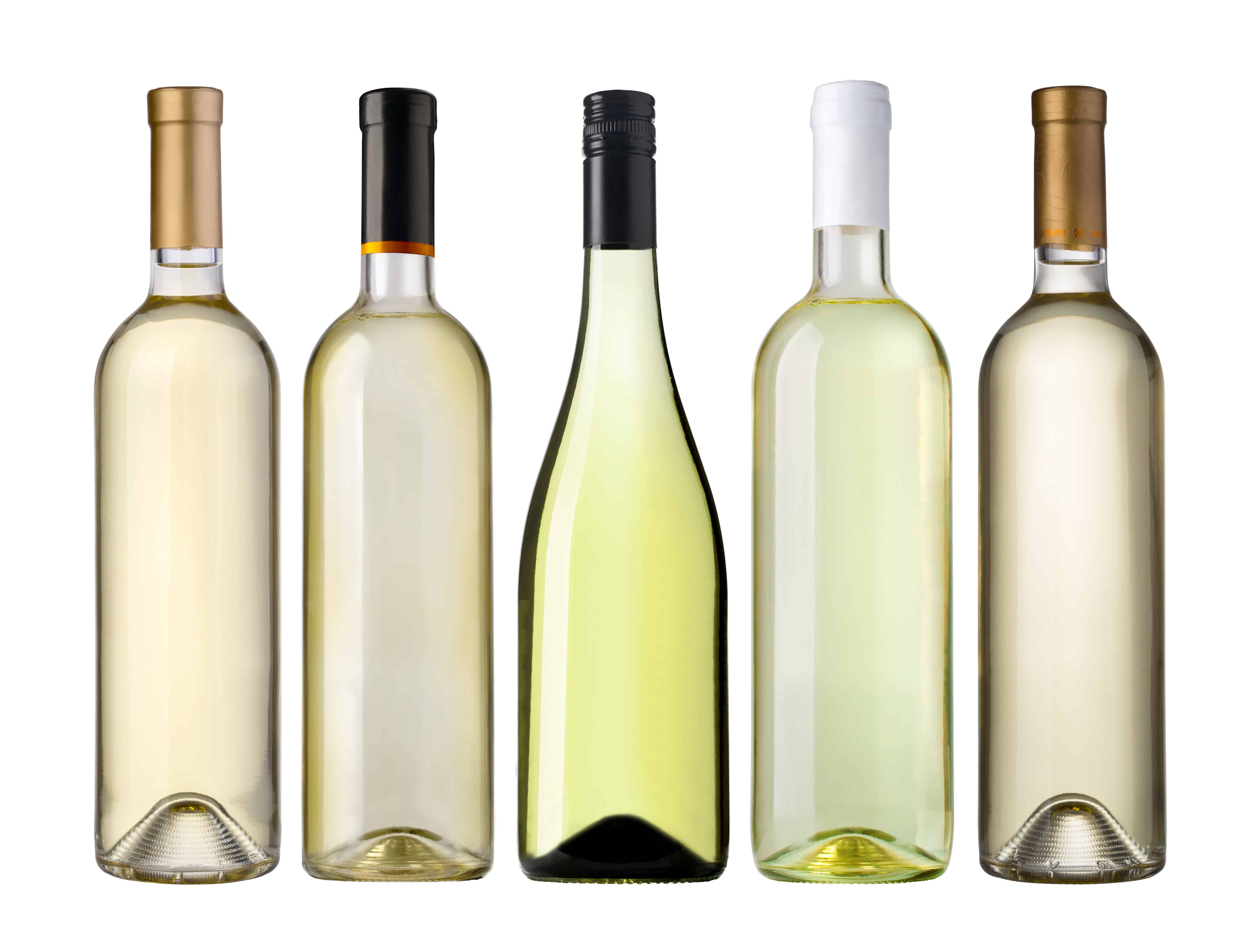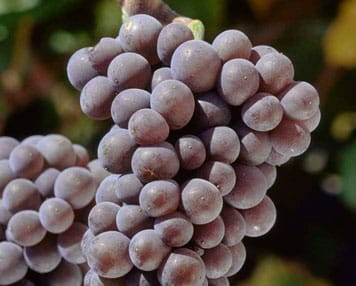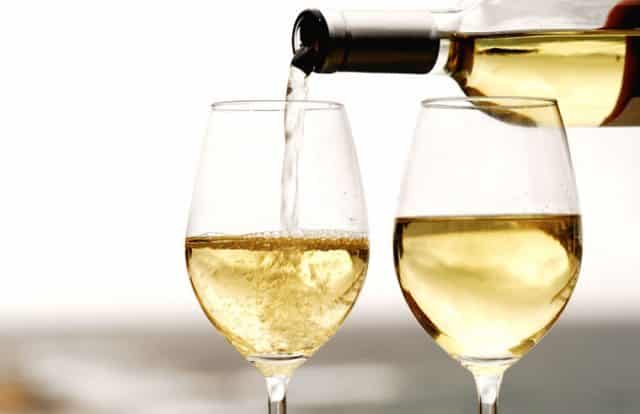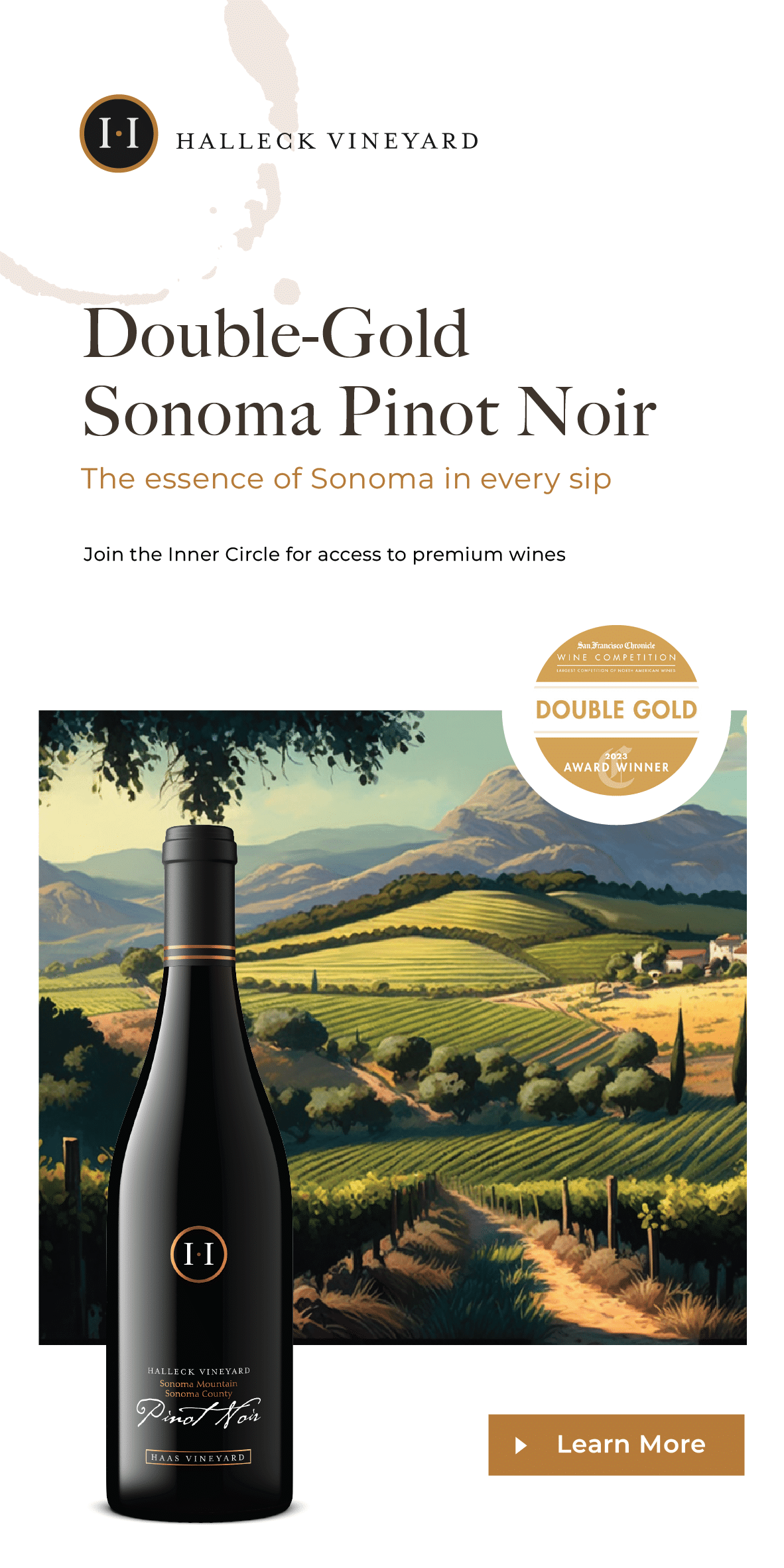Chardonnay vs Pinot Grigio vs Sauvignon Blanc: Finding the Best White Wine for You

Do you know the difference between Chardonnay, Pinot Grigio and Sauvignon Blanc?
How about what makes oaked wine taste different from unoaked wine?
Do either of these questions feel like reading a foreign language?
It will all make sense with this short read. It can be difficult to pick out the nuances between different white wine varieties and to understand the subtle (and sometimes not-so-subtle) differences between them.
Whether you’re new to the world of wine, or an enthusiast expanding your knowledge, there is always something more to learn.
We’ll look at the differences between Chardonnay vs Pinot Grigio vs Sauvignon Blanc, breaking down their histories, tasting notes, and some recommended food pairings. We’ll answer some common white wine questions, like, “Is Sauvignon Blanc sweet or dry?”
Sonoma Whites | Sommelier’s Choice
An introduction to 5 popular types of white wines

It’s nice to know the most common varieties of white wine. There are many – oh so many – white wines to choose from. For the sake of brevity, we’ll share five of our favorites.
Chardonnay
When people think of white wine, most immediately picture Chardonnay. Rightly so, as it is the most popular white wine varietal in the United States.
Chardonnay represents a span of styles depending on the winemaking methods, including oaked and unoaked. A glass of Chardonnay can be anything from buttery and creamy to minerally and bright. It is often quite dry, with a medium to full body and hints of butter, tropical fruit, and spice.
The range of flavors from bottle to bottle and vineyard to vineyard suggests why Chardonnay has launched to fame – there’s a glass for everyone and most taste preferences.
Pinot Grigio
Pinot Grigio is the second most popular white wine variety sold in the United States. It has a great balance of being dry to off-dry and crisply refreshing, with notes of pear and mineral on the nose.
You’ll find Pinot Grigio pairs really well with lighter fare and seafood, and is equally as wonderful when enjoyed simply as a cocktail.
Sauvignon Blanc
Like Chardonnay, Sauvignon Blanc is a white wine with a variety of styles and flavors. It often offers a bold punch of acidity and can range from tropically fruity to green and herbaceous to earthy and flinty. Indeed, no two bottles of Sauvignon Blanc are alike, making it a fun white wine to explore.
Sauvignon Blanc is slightly less popular than Chardonnay or Pinot Grigio. It didn’t achieve international recognition until the 1980s. Staunch Chardonnay and Pinot Grigio drinkers may be surprised to find they even prefer Sauvignon Blanc after exploring this crisp, zesty wine.
Sonoma Whites | Sommelier’s Choice
Riesling
Riesling is a white wine from Germany and can lean from very sweet to bone dry. The sweet varieties age quite well – and there are many Riesling dessert wines on the market.
Rieslings are aromatic white wines with floral notes and hints of mineral, petrol, and earth. They pair beautifully with spicy foods, especially Asian cuisine.
Gewürztraminer
Gewürztraminer is an incredibly aromatic and vivacious white wine. For all its vibrance and versatility, it’s probable you’ve never heard of or tried it. Quite popular in Europe, white wine Gewürztraminer hasn’t achieved recognition in the United States as much as some of its other white wine relatives.
Gewürztraminer is alluring and exotic. It’s also the perfect drink for many situations, from a light summer brunch to a heavy Thanksgiving feast. As far as tasting notes, think rose petals, lychee, and the aromas of pumpkin pie spice – from nutmeg to cinnamon to clove. It can be bone dry to slightly sweet.
Sommelier’s Choice | Award-Winning Sonoma White Wines
Having reviews these selections of the white wine family, there are three whites that are often compared – and confused – Chardonnay, Pinot Grigio, and Sauvignon Blanc.
These popular white wines have quite a lot in common, which is why it’s easy to confuse them. All three are made from just the flesh of the grapes, not the skins. They vary in flavor depending on the region from which they originated, as well as individual choices made by the winemakers.
There are distinctive differences that set Pinot Grigio, Sauvignon Blanc and Chardonnay apart.
A comparison of Pinot Grigio and Sauvignon Blanc
At a glance, Pinot Grigio and Sauvignon Blanc seem quite similar in the glass. We’ll start by looking back at their origins.
Pinot Grigio vs Sauvignon Blanc: Grapes

Both Pinot Grigio and Sauvignon Blanc grapes originated in France, but they do not look alike.
Grigio means “grey” in Italian, and so Pinot Grigio is aptly named because the grapes have a dusty greyish skin. Pinot Grigio grapes are also used to make Pinot Gris, the richer French wine style.
Sauvignon Blanc grapes are bright green, round, and densely clustered. They ripen early and can be grown in a variety of climates. These grapes are especially reflective of their terroir, or place of origin, and the flavors imparted by each region become quite obvious in the finished wine.
Pinot Grigio vs Sauvignon Blanc: Region
The grapes of both Pinot Grigio and Sauv Blanc originated in France, but neither found their fame there.
Instead of opting for a rich style like the French Pinot Gris, Italian winemakers produce a dry, simple style of wine to work well with most meals and be very easy to drink. Pinot Grigio is most widely grown in Italy, particularly in the North Eastern regions of Lombardy, Veneto, and Friuli.
Sauvignon Blanc found international recognition once it moved to New Zealand. There, the sandy soils and cool climate produce some of the most popular Sauvignon Blanc wines, with particularly fruity, ripe, and pungent flavors.
While Pinot Grigio is the more popular of the two, Sauv Blanc is grown in more regions around the world.
Fantastic Sauvignon Blanc vineyards can be found in France, South Africa, California, New Zealand, Australia, and Chile. Whereas Pinot Grigio is mostly grown in Italy, France, Austria, Germany, and California. Our “Little Sister” was judged Best California Sauvignon Blanc by the Orange County Wine Society and Sunset Magazine.
Pinot Grigio vs Sauvignon Blanc: Tasting Notes
Despite having similar hues, Pinot Grigio and Sauvignon Blanc have different flavor profiles. Pinot Grigio is usually softer, more subtle, and smooth, making it popular with wine drinkers beginning their explorations. Conversely, a bright, zesty glass of Sauvignon Blanc can be bold, yet can have very subtle nuances of flavor.
Additionally, amongst wines of the same grape varietal, Sauvignon Blanc varies significantly depending on the region from which it originates. One particular glass could have hints of lime, passionfruit, peach, or grapefruit. A Sauvignon Blanc from Loire Valley, France will be flinty and earthy, while a Sauv Blanc from Marlborough, New Zealand will be more fruit-forward and bright.
That being said, all Sauv Blancs share a similar characteristic of acidity and distinctive green notes. These green notes come from chemical compounds called pyrazines, which impart flavors of gooseberry, grass, or bell pepper into the wine.
Pinot Grigio is a white wine with much lighter citrus notes, and peach or green apple flavors. This is not to say Pinot Grigio is not bright and zesty. In fact, if harvested early, the grapes can give quite a punch to wine, but when comparing Pinot Grigio to Sauvignon Blanc, the latter almost always shows as brighter with more acidity.
On the nose, a glass of Pinot Grigio will have delicate aromas of honeysuckle or spice, as opposed to the freshly cut grass and bright citrus scent of a Sauvignon Blanc. Indeed, Sauv Blanc is the most aromatic variety of the two.
When comparing Pinot Grigio to Sauvignon Blanc, Pinot Grigio is just a bit softer on both the nose and the palate.
Pinot Grigio vs Sauvignon Blanc: Food Pairings

It’s not surprising that Pinot Grigio and Sauvignon Blanc pair well with different dishes.
The more delicate Pinot Grigio pairs perfectly with fish and seafood, particularly shellfish. As an Italian wine, it’s a natural complement to your favorite pasta dish, cream sauces, and other lighter Italian cuisine. It also has a special affinity with mozzarella.
While Sauvignon Blanc is also delicious with seafood and shellfish, its bright, acidic flavors are particularly well suited for goat cheese, mild vinaigrettes, white meats, and spiced herbal fare.
Differences between Chardonnay vs Sauvignon Blanc
Chardonnay is the most consumed white wine in the world, so no white wine comparison would be complete without it. Usually quite dry, with rich, fruity flavors, Chardonnay is a favorite of many.
But how does it stack up against Sauvignon Blanc?
Chardonnay vs Sauvignon Blanc: Grapes
Chardonnay and Sauvignon Blanc grapes look very similar. They both originate from France and are round and green in appearance, generally growing in tight clusters. Sauvignon Blanc grapes will grow in slightly looser clusters than Chardonnay grapes, but this does vary.
Chardonnay and Sauvignon Blanc hale from different parts of France. Sauvignon Blanc grapes come from Bordeaux, whereas Chardonnay grapes are from Burgundy and are used to make both white wines and sparkling wines, including Champagne, specifically from the Champagne region.
Chardonnay vs Sauvignon Blanc: Region
Both of these wines are grown all around the world in many of the same regions, including France, New Zealand, Australia, South Africa, and the United States.
Sauvignon Blanc is a much more popular choice in Chile, whereas Chardonnay is more common in Italy, Canada, and the United States.
Chardonnay and Sauvignon Blanc both do well in a cool climate like West Sonoma County. You can try ours at a Sebastopol wine tasting at our winery estate, which is the top-rated boutique wine tasting Sonoma County experience.
Chardonnay vs Sauvignon Blanc: Tasting Notes
Perhaps the easiest way to differentiate Chardonnay vs Sauvignon Blanc is to taste them. Chardonnay is richer and fuller-bodied, sometimes with a viscous mouthfeel. Sauvignon Blanc can be more light, bright, and herbaceous.
Both Chardonnay and Sauv Blanc are traditionally quite dry, but some Sauvignon Blancs contain residual sugar, making them sweeter. Sauvignon Blanc can be made into a dessert wine, which is very sweet.
Sauvignon Blanc offers a broader spectrum of sweetness.

Both wines are incredibly diverse in flavor, as they are both very expressive of their terroir. In cool regions, Chardonnay will have a medium body, more acidity, and flavors of apple, pear, and green plum. A cool climate Sauv Blanc can have simultaneous hints of green apple and asparagus, or gooseberry and green bell pepper.
In warm regions, Chardonnay develops more notes of banana, mango, melon, and fig, while a Sauvignon Blanc will have sweeter flavors of passionfruit, pineapple, or fresh peach.
Another contributing factor to the taste of a wine is the barrel in which it was fermented. Those that are fermented in oak barrels – a common practice for Chardonnay winemakers – are referred to as “oaked.”
Sauv Blanc is usually fermented in stainless steel tanks in order to preserve the crisp zestiness of the wine. However, some winemakers choose to alter the flavor by experimenting with oak barrels to broaden and smooth the flavor profile.
Wines that are oaked and have often gone through a process known as malolactic fermentation will soften acidity and contribute notes of butter, vanilla, hazelnut, spice, or honey. Therefore, if you enjoy a classic New World Chardonnay, you might prefer a Sauvignon Blanc that has seen some oak, as they will share some similar notes.
Likewise, if you aren’t a fan of oaked flavors, unoaked Chardonnay is also available. These wines have more minerality and acidity than a common Chardonnay. This is often the style of White French Burgundy, which is made entirely of Chardonnay grapes.
Chardonnay vs Sauvignon Blanc: Food Pairings
Chardonnay, as a full-bodied wine, pairs well with a number of foods. Try it with creamy soups and sauces, rich fish and poultry dishes, and soft cheeses.
But stay away from the cream when it comes to Sauv Blanc. Instead go heavier with the herbs, or think light and citrusy, like a summer salad or fresh, green vegetables.
Finding the best white wine for you

This guide gives everyone a little bit to sip on.
Looking for your next white wine to purchase?
Beginner wine drinkers often opt for a Pinot Grigio. But we encourage those that enjoy rich, dry wines to try a Chardonnay.
The best Sauvignon Blanc for Pinot Grigio lovers might be a fruity, off-dry Sauv Blanc from New Zealand. If you’re usually a Chardonnay drinker, the best Sauvignon Blanc might be a lightly-oaked Sauvignon Blanc from California or France.
And to all of our white wine drinkers (whether adventurous beginners or enthusiasts), it’s time to enjoy a crisp Sauv Blanc, like our very own, award winning, Little Sister Sauvignon Blanc.




